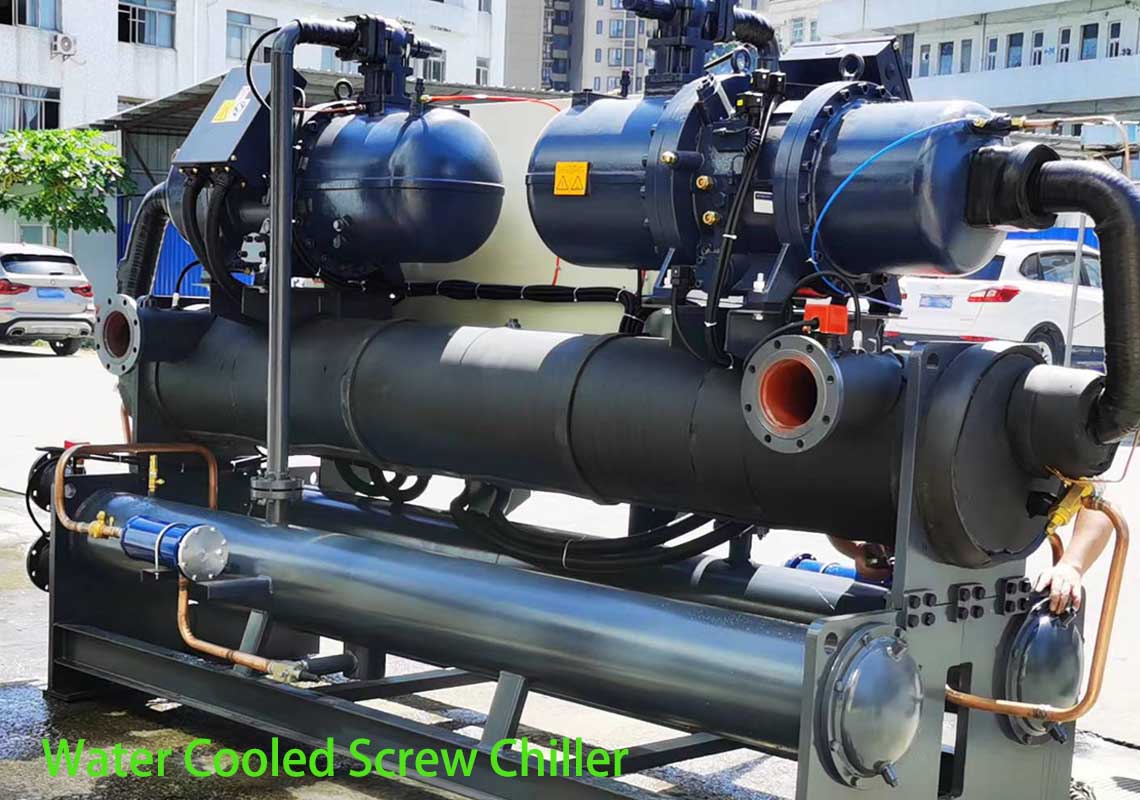More dust and poor water quality in the chiller environment will affect the normal operation of the equipment, and even lead to downtime. In order to increase the operating power of the chiller, it is necessary to create high-quality conditions for use and effectively maintain the operating power of the air-cooled chiller.
When using the chiller, if there is a lot of dust and other problems in the environment during the operation of the equipment, the normal operation of the equipment will be affected after the equipment enters the water-cooled chiller. In order to prevent the chiller equipment from being affected by dust in the environment and a large amount of scale due to long-term lack of maintenance, companies need to conduct professional inspections on chillers on a regular basis.
A layer of solid or ooze builds up, called fouling, which adds additional fouling thermal and flow resistance, increasing required heat transfer area, power consumption and maintenance cleaning costs. Due to the large number and wide range of heat exchangers, the fouling of heat exchangers has a great impact on one-time investment, metal material consumption and energy consumption. In today's emphasis on energy saving and emission reduction, it is particularly important to minimize the impact of dirt.
During the operation of the water-cooled screw chiller, on the water side of the heat exchange equipment, especially in the condenser of the open circulating cooling water system, there are slightly water-soluble or water-insoluble minerals, such as calcium carbonate, calcium sulfate, silicic acid Calcium, iron oxide, phosphate, etc. Adhering to the inner surface of the heat transfer tube to form scale; dust, silt, algae, microbial communities and even leaves, weeds, etc. The sediment mixed into the water is deposited on the inner surface of the heat transfer tube, forming sludge. Fouling on the water side mainly includes scale and sludge. Fouling increases the heat transfer resistance of the heat transfer surface, directly affects the heat transfer effect, increases the condensation temperature or reduces the evaporation temperature, resulting in increased energy consumption and reduced cooling capacity of the refrigerator. The thickening of the scale layer reduces the cross-sectional area of the flow in the heat transfer tube, increases the water flow velocity and the roughness of the tube wall, leads to an increase in the flow resistance on the water side, and increases the power consumed by the pump.
The accumulation of dirt will also cause local corrosion or even perforation of the heat exchange surface, which seriously threatens the safe operation and service life of the water-cooled chiller. In the heat exchanger design of water-cooled chillers, the presence of dirt increases the heat transfer resistance, reduces the overall heat transfer coefficient of the heat transfer tube, and increases the energy consumption of the compressor. Therefore, it is necessary to compensate for the reduction of the overall heat transfer coefficient by increasing the heat transfer area to ensure sufficient heat transfer. The correct choice of fouling factor has a great influence on the cost, energy consumption and operation cost of heat exchange equipment. Unfortunately, despite ongoing scientific research on fouling, to date there is no generally accepted value for the fouling factor that can be accurately used in heat exchanger design.
In the design of heat exchangers, the choice of fouling factor is often based on experience rather than science. Based on operating experience with a particular system under the same or similar operating conditions, or based on measurement data obtained from actual equipment under the same operating conditions, or based on test data obtained from testing with prototype or model equipment in the laboratory, or using the recommendations of authoritative institutions It is reasonable to estimate the data.
In order to avoid similar failures of chillers, it is necessary to complete the treatment of water sources and environmental dust in time. It can provide a comfortable environment for the chiller, and pay attention to the maintenance of the chiller. Even if the enterprise runs the chiller for a long time without any rest time, the equipment can also maintain stable operating performance and truly achieve the goal of quickly reducing the space temperature.

评论
发表评论